Presidentieel Paleis, Nanjing - Kaartje, openingstijden, hoogtepunten en tips


The Presidential Palace (总统府) in Nanjing stands as an iconic architectural complex, representing one of the most extensive and well-preserved remnants of modern Chinese history. It holds a paramount position as one of the key architectural representatives of the Republic of China era in Nanjing and is considered a vital testament to China’s modern history. Over the centuries, the Nanjing Presidential Palace has served as a central hub for political and military affairs, bearing witness to significant events that have shaped the course of Chinese history. It has been closely associated with numerous pivotal historical moments, hosting key figures who played pivotal roles in the nation’s destiny.
The history of the Nanjing Presidential Palace traces back over 600 years, with its origins dating back to the Ming Dynasty when it was known as the Gui De Hou Mansion and the Han Wang Mansion. During the Qing Dynasty, it was repurposed as the Jiangning Weaving Bureau and the Liangjiang Governor’s Office. Emperors Kangxi and Qianlong even used it as a temporary palace during their southern tours. The Taiping Heavenly Kingdom, upon establishing its capital in Nanjing, constructed the grand Heavenly King Mansion within these grounds. On January 1, 1912, Dr. Sun Yat-sen was inaugurated as the interim President of the Republic of China here, officially transforming it into the Presidential Palace of the Republic of China.
The Presidential Palace in Nanjing sprawls across an area of approximately 90,000 square meters, encompassing a harmonious fusion of traditional Chinese Southern garden elements and vestiges of modern Western architectural influence. The complex is divided into three main regions: the central area houses the Nationalist Government, the Presidential Palace, and associated institutions. The western section contains Dr. Sun Yat-sen’s temporary presidential office, the secretary’s office, the Western Garden, Sun Yat-sen’s living quarters, and the General Staff Headquarters. Finally, the eastern region encompasses the Executive Yuan, the Tao Lin Er Gong Shrine, the stables, and the Eastern Garden.
The Nanjing Presidential Palace is not merely an architectural masterpiece; it is a repository of historical significance and a living testament to China’s transformation from ancient times to the modern era. With its rich history and the numerous monumental events that unfolded within its walls, it stands as a symbol of national pride and an indispensable part of China’s cultural heritage.
Inhoudsopgave
- Basisinformatie
- Locatie en vervoer
- History of Presidential Palace
- Highlights of Presidential Palace
- Vlog about Presidential Palace
- Nuttige tips uit recensies
- Attractions Near Presidential palace
Basisinformatie
| Website | http://www.njztf.cn/ |
| Geschatte lengte van de tour | 1 - 2 uur |
| Ticket Prijs | 35 RMB |
| Openingstijden | 8.30 – 18.00; Last admission: 17.10 (1st March – 14th October) 8.30 – 17.00; Last admission: 16.10 (15th October – 28th February the next year) |
| Telephone Numbers | 0086-025-84578716 |
Locatie en vervoer
The Presidential Palace, also known as the China Modern History Museum, is located in Nanjing, the capital city of Provincie Jiangsu, China. Its exact address is 292 Changjiang Road, Xuanwu District, Nanjing. To get there, you can choose the following ways:
Bus: Take bus 9, 29, 44, 65, 95, or 304, get off at Presidential Palace (总统府), and you will be standing at the entrance.
Metro: The nearest metro station to the Presidential Palace in Nanjing is Daxinggong (大行宫) on line 2 and line 3. After getting out of the station from Exit 5, walk about 20 meters to the east to reach the palace.
History of Presidential Palace
The history of the Presidential Palace in Nanjing is intertwined with the tumultuous events that shaped China’s modern era. Originally built during the Ming Dynasty in the 14th century, the palace served as the Imperial Palace of the Ming and Qing Dynasties, known as the “Hanwangfu.” However, its historical significance truly emerged with the establishment of the Republic of China in 1912.
Following the Xinhai Revolution that overthrew the Qing Dynasty, Sun Yat-sen, the founding father of the Republic of China, was inaugurated as the first provisional president on January 1, 1912, in Nanjing. To symbolize the transition from imperial rule to republican governance, the Hanwangfu was repurposed as the Presidential Palace.
Under the presidency of Sun Yat-sen, efforts were made to transform the palace into a modern government complex. The western-style presidential office building, ceremonial hall, and meeting rooms were constructed, incorporating both traditional Chinese architectural elements and Western influences.
In 1927, the leadership of the Kuomintang (Nationalist Party) passed to Chiang Kai-shek, who made the Presidential Palace his headquarters. During the Sino-Japanese War (1937-1945) and the Chinese Civil War (1945-1949), the palace played a significant role as a base for the Nationalist government.
The palace witnessed major historical events, such as the establishment of the Nanjing National Government, the signing of important treaties, and the planning of military strategies. It also housed important figures like Chiang Kai-shek and his wife, Soong Mei-ling.
After the founding of the People’s Republic of China in 1949, the Presidential Palace underwent changes. It was transformed into the China Modern History Museum in 1980, with the aim of preserving and showcasing the history of the Republican era.
Highlights of Presidential Palace
Architecturale pracht
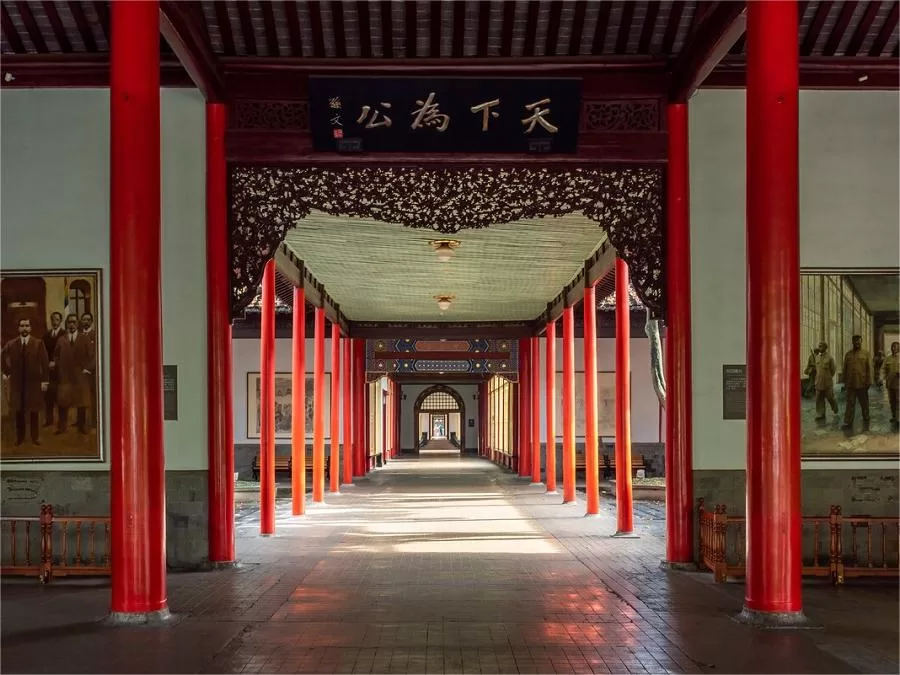
The architecture of the Presidential Palace in Nanjing is a captivating blend of traditional Chinese and Western influences. The palace features grandeur and intricate detailing, with impressive buildings, elegant courtyards, and picturesque gardens. The design incorporates elements such as traditional Chinese rooflines, decorative motifs, and red walls symbolizing good fortune. Western architectural styles are evident in the Presidential Office Building, with its neoclassical façade and colonnades. The harmonious fusion of these architectural styles creates a visually stunning complex that reflects the transition from imperial rule to a modern republic, making the Presidential Palace an architectural masterpiece of historical and cultural significance.
Museum Exhibits
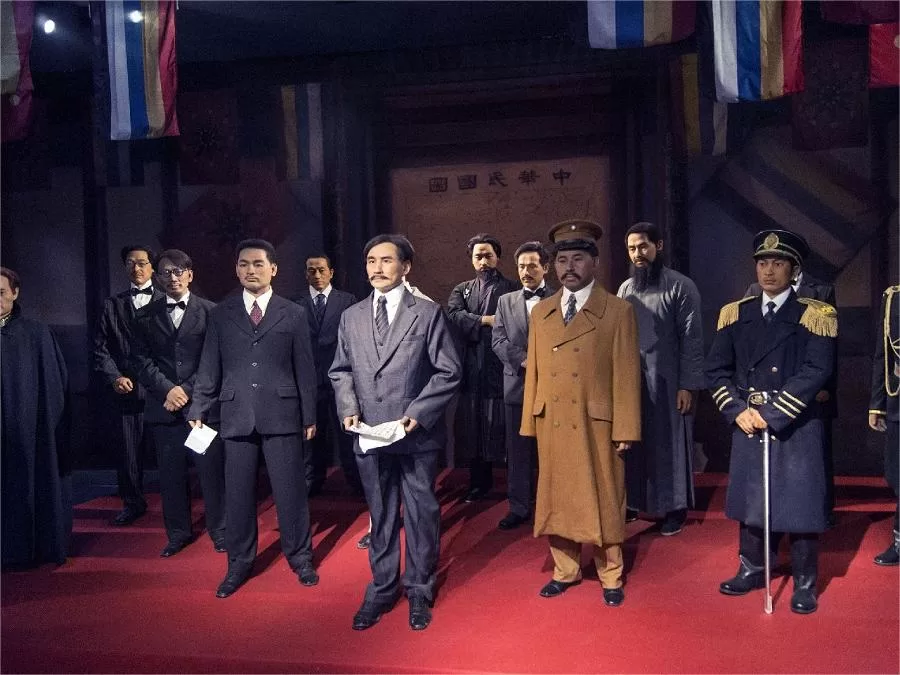
The Museum Exhibits of the Nanjing Presidential Palace offer a captivating journey through China’s modern history. The collection includes a wide range of artifacts, photographs, and documents that showcase the political, cultural, and social developments of the Republican era. Visitors can explore themed exhibitions that delve into topics such as the Xinhai Revolution, the establishment of the Republic of China, the Sino-Japanese War, and the Chinese Civil War. The exhibits provide valuable insights into the lives of prominent figures, significant events, and the struggles and aspirations of the Chinese people during this transformative period.
Prachtige tuinen
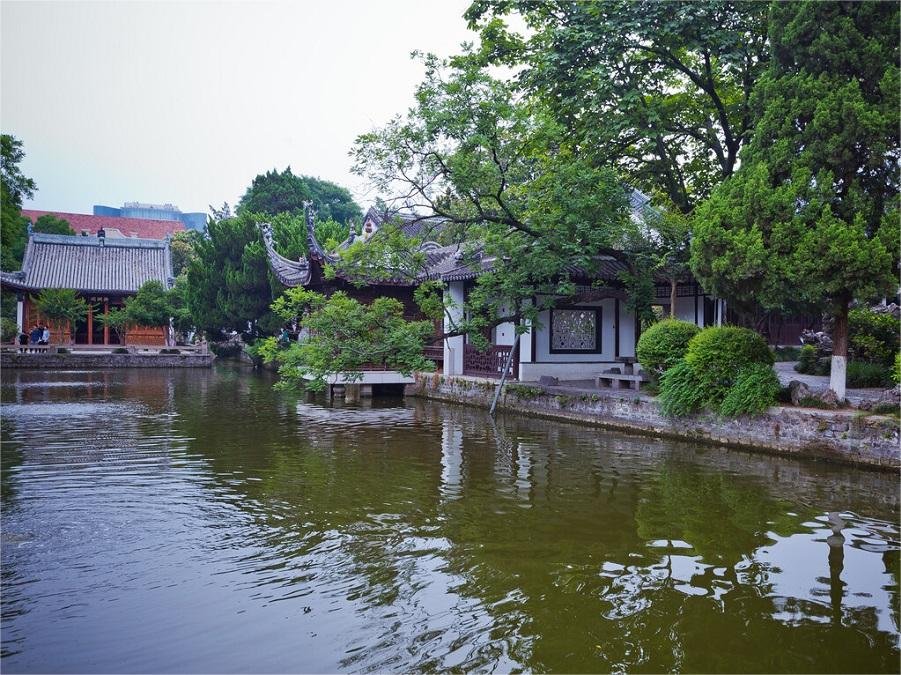
The beautiful gardens of the Nanjing Presidential Palace are a serene oasis within the bustling city. Spanning across the palace complex, the gardens enchant visitors with their tranquil ambiance and breathtaking landscapes. Lush greenery, meticulously manicured plants, and colorful flowers create a picturesque setting for leisurely strolls and peaceful contemplation. Traditional Chinese landscaping principles are evident, featuring serene ponds, meandering pathways, and elegant pavilions. These gardens provide a harmonious escape, inviting visitors to immerse themselves in the beauty of nature while surrounded by the historical grandeur of the palace.
Vlog about Presidential Palace
Nuttige tips uit recensies
- Layout of the Presidential Palace:
- The Presidential Palace is divided into three parts: Central Axis, East Garden, and West Garden.
- The central axis route: Gate Tower -> Grand Hall -> Auditorium -> Second Hall -> Reception Hall -> Qilin Gate -> Zichao Building -> Air Raid Shelter (outer structure only).
- East Garden Tour Route: Explore the East Garden: Replicated Garden -> Executive Yuan -> Historical Exhibition of Hong Xiuquan and Heavenly Palace -> Taolin Er Gong Shrine -> Historical Materials Exhibition of Qing Dynasty Governors and Governors’ Office -> Stable.
- West Garden Tour Route: Visit the West Garden: Xuyuan (Jiangnan-style garden) -> Zhongshan Square (with Dr. Sun Yat-sen’s bronze statue) -> Temporary Presidential Office -> General Staff Headquarters of the National Government -> Sun Yat-sen’s Living Quarters -> Library.
- Bagage-opslag:
- The luggage storage facility is located at the south gate of the Presidential Palace. But the exit is at the northwest gate, which means you have to walk a while. Consider using the luggage storage at the Jiangsu Provincial Art Museum, located opposite the Presidential Palace.
- Preparation for Self-Guided Tours:
- If you don’t plan on hiring a guide, it’s recommended to familiarize yourself with some information about the Presidential Palace beforehand to enhance your experience.
- The area provides self-guided audio devices for 20 RMB (additional charges for overtime within 2.5 hours).
- Must-Visit Zichao Building:
- Zichao Building is highly recommended for its well-preserved historical office scenes. Be mindful of crowds and stairs while going up and down.
- Information about Surrounding Areas:
- Consider exploring the nearby Kexiang Alley and Hong Temple areas for local snacks.
Attractions Near Presidential palace
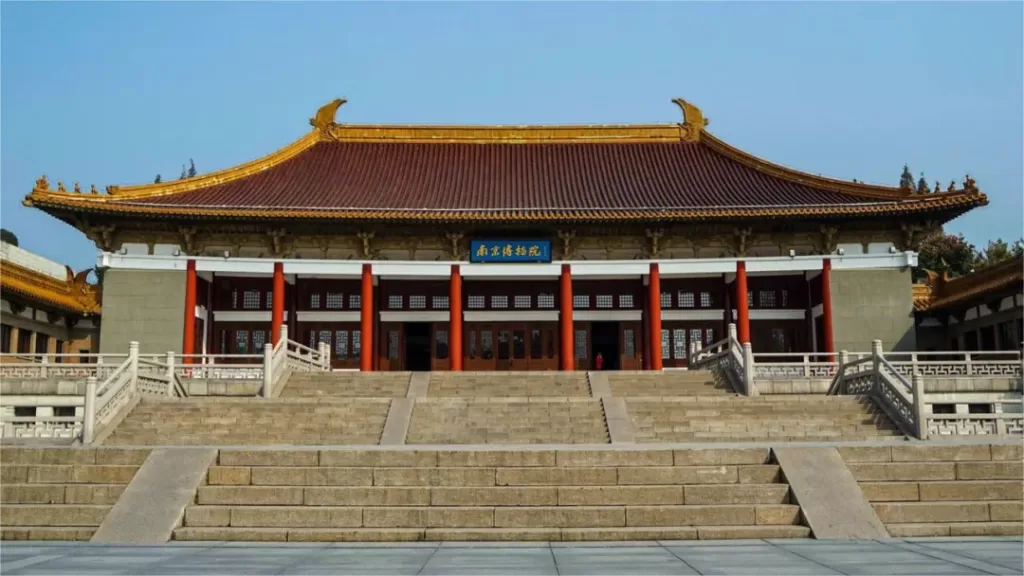
Nanjing Museum - Een van de meest prestigieuze musea in China
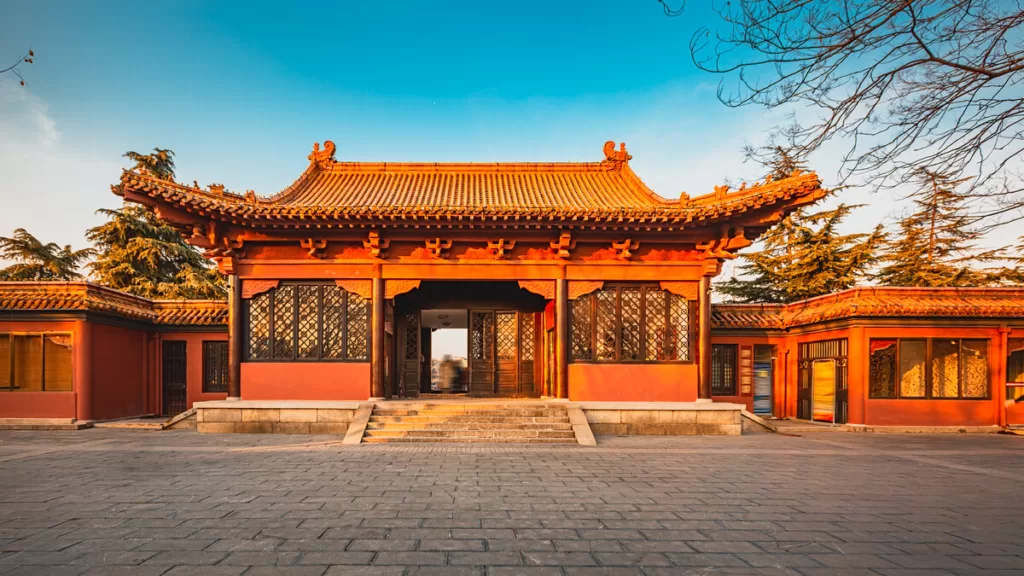
Ming Paleis Ruïnes Park - Keizerlijke Residentie voor Verboden Stad

Oriental Metropolitan Museum - Een venster op de geschiedenis van Nanjing
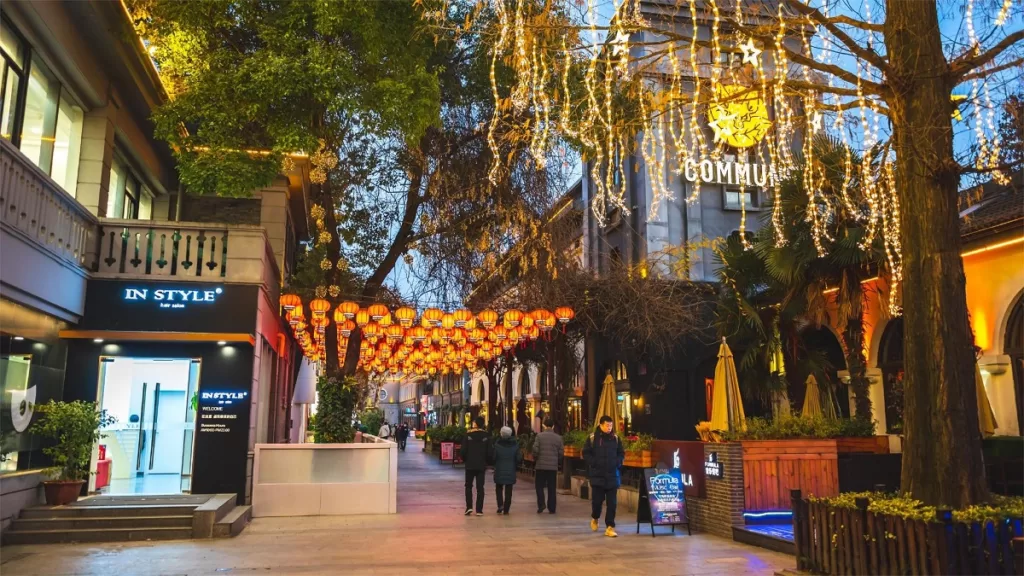
Nanjing 1912 Street - Een historisch en levendig cultureel centrum

Jiangning Imperial Silk Manufacturing Museum - De wereld van zijdeproductie

Xinjiekou - Een bruisend commercieel centrum
Jiangsu historische plaatsen, Attracties in Nanjing